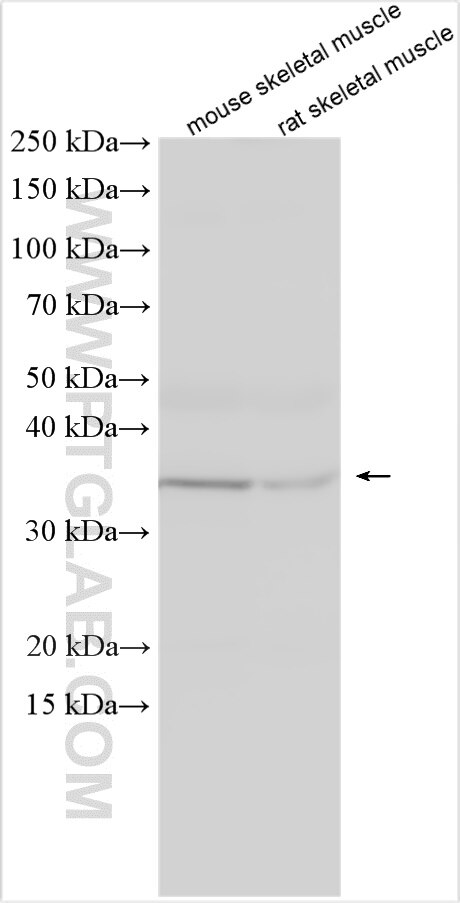Tested Applications
| Positive WB detected in | HeLa cells, mouse skeletal muscle tissue, rat skeletal muscle tissue |
Recommended dilution
| Application | Dilution |
|---|---|
| Western Blot (WB) | WB : 1:1000-1:4000 |
| It is recommended that this reagent should be titrated in each testing system to obtain optimal results. | |
| Sample-dependent, Check data in validation data gallery. | |
Product Information
26496-1-AP targets ZIP13 in WB, ELISA applications and shows reactivity with human, mouse, rat samples.
| Tested Reactivity | human, mouse, rat |
| Host / Isotype | Rabbit / IgG |
| Class | Polyclonal |
| Type | Antibody |
| Immunogen |
CatNo: Ag24388 Product name: Recombinant human SLC39A13 protein Source: e coli.-derived, PET30a Tag: 6*His Domain: 1-68 aa of BC008853 Sequence: MPGCPCPGCGMAGPRLLFLTALALELLGRAGGSQPALRSRGTATACRLDNKESESWGALLSGERLDTW Predict reactive species |
| Full Name | solute carrier family 39 (zinc transporter), member 13 |
| Calculated Molecular Weight | 371 aa, 39 kDa |
| Observed Molecular Weight | 32 kDa |
| GenBank Accession Number | BC008853 |
| Gene Symbol | ZIP13 |
| Gene ID (NCBI) | 91252 |
| RRID | AB_3085877 |
| Conjugate | Unconjugated |
| Form | Liquid |
| Purification Method | Antigen affinity purification |
| UNIPROT ID | Q96H72 |
| Storage Buffer | PBS with 0.02% sodium azide and 50% glycerol, pH 7.3. |
| Storage Conditions | Store at -20°C. Stable for one year after shipment. Aliquoting is unnecessary for -20oC storage. 20ul sizes contain 0.1% BSA. |
Background Information
ZIP13, a member of the SLC39A/ZIP family, is mainly localized in the Golgi apparatus. It has been shown to play important roles in the development of bone, tooth and connective tissues. The apparent molecular weight of ZIP13 detected by SDS/PAGE was lower than its expected molecular mass (32 kDa), likely because of the largely hydrophobic nature of the protein, its high capacity to bind SDS, and, therefore, its more rapid migration during gel electrophoresis (PMID: 23213233).
Protocols
| Product Specific Protocols | |
|---|---|
| WB protocol for ZIP13 antibody 26496-1-AP | Download protocol |
| Standard Protocols | |
|---|---|
| Click here to view our Standard Protocols |






